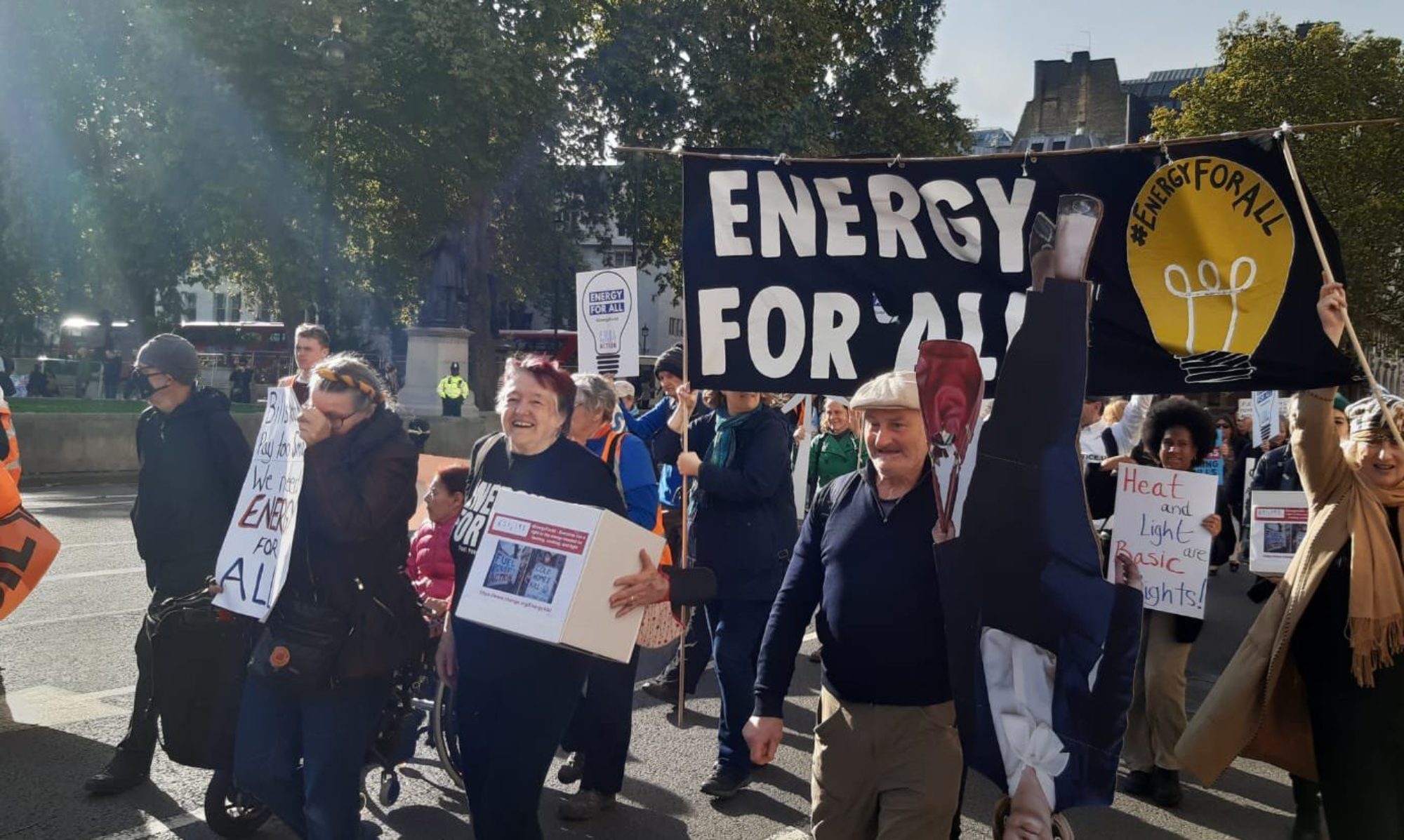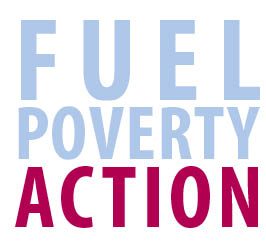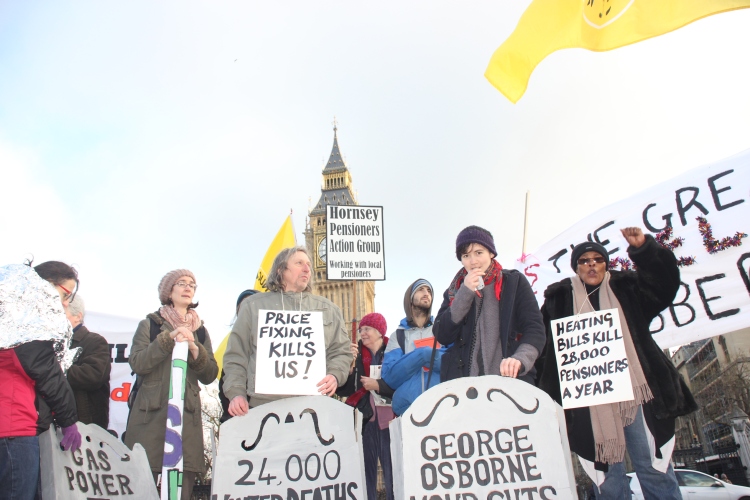STEP 1: GET TOGETHER…
Organising an assembly will be easier if you do it with other people and people are more likely to attend if they’ve been involved in the organising process.
Try to take a lead from people struggling with fuel poverty. People who tend to be worst affected are pensioners, disabled people, people with illnesses, students, single mothers and others on low incomes. If your group is not made up of these people, you can invite them to get involved in organising or attending the assembly by going through established groups i.e. pensioners’ groups or luncheon clubs, disabled peoples’ organisations, residents’ associations, community groups, student unions and mother and children groups. Do some research about these groups, get in contact with them, explain the idea of a fuel bill assembly and see if people are interested in meeting to discuss the idea further.
You can also think about organising assemblies through your own immediate networks: friends, family, neighbours, schools, workplaces, estates…
STEP 2: PLACE, DATE, TIME…
Once you’ve got together a few people who want to help organise your assembly, you can meet to decide on the details. The first question you might want to consider is where to hold your assembly. You can hold your assembly anywhere, but here are a few ideas:
• Pay a visit to one of the robbers…You could hold your assembly inside or outside the offices of energy companies, political parties, politicians, government departments, local councils, landlords and letting agents. Getting inside an office and occupying is a fantastic way of turning up the heat on the robbers. But it will take a bit of planning and thinking about how you can get inside. Get in touch with us for advice about this. You can also find legal advice on your rights when taking action at www.greenandblackcross.org.
• Busy public places…Find somewhere very visible that will attract passers-by.
• Inside warm public buildings…Think shopping centres, libraries, shops, town halls. Those who cannot afford to heat their homes should be allowed to get warm anywhere.
• Inside a booked venue…You might decide that this is the easiest thing to do. Holding an assembly in a well known community hub is a good way to bring people in. Community centres, clubs, day centres, places of worship, or trade unions may be ready to offer a reduced rate for something like this.
• In someone’s home…If you’re organising an assembly among your neighbours, then you could organise your assembly in one of your homes.
After you’ve decided where you want to be, think about the time and date. We’re calling for assemblies between Friday 15th and Monday 18th. The main question to consider here is who you want to attend and what time works best for them. It might be that you want to occupy an office that is only open on a weekday. But if your priority is getting lots of people to attend, a weekend date may be better so that people do not have to take time off work.
Finally, make sure your assembly can be accessed via accessible transport so that wheelchair users can attend.
STEP 3: SPREAD THE WORD…
Once you’ve chosen a meeting point, time and date, you can go ahead and publicise the assembly. A template flyer and poster will be available to download on our website (fuelpovertyaction.org.uk) soon. Think about which people you want to reach and where these people go. For instance, if you want pensioners to attend, find out about where local pensioners’ groups meet or where luncheon groups happen and get lots of leaflets and posters up there.
Social media is another good way to publicise your assembly. Making a Facebook event is a good idea.
Think of groups in your area who might want to take part and/or help publicise the assembly eg anti-cuts and anti-poverty groups, trade unions, environmental groups, health campaigns, Occupy networks, groups of pensioners, disabled people, single parents, Citizens’ Advice Bureaus and law centres.
Whatever you’re doing, make sure you email [email protected] the details so that we can publicise your assembly on our website, through our social media and through our email lists and networks.
STEP 4: RESOURCES…
Have a think about what you’ll need for your assembly on the day and how to get hold of this. This might include:
- Printing leaflets to distribute to passers-by if you’re in a public place. A leaflet template will be available to download from our website nearer the time.
- Banners and placards that will look good in a photo.
- A good megaphone or PA system so that people who are speaking can be heard.
- If you’re going to be outside, it’s great to provide things to keep warm with i.e. blankets, hot water bottles and flasks of tea. This can make the assembly visually striking as well. So can umbrellas! In case of wet weather, however, you might want to consider some form of shelter from a portico to gazebos or marquees.
- Bring some practical information about things such as ways to bring down bills, legal rights and government help schemes. You can download all of this from our website. Invite any local experts who can advise on anything from the law, debt, or insulation to starting an energy co-op.
- Find someone to take photographs and videos on the day. Send these to [email protected] and we’ll promote them.
STEP 5: PLAN THE ASSEMBLY…
Structure
It is a good idea to plan in advance what form your assembly will take so that you can achieve your aims. Assemblies can be used to:
- Speak out about how you and people in your situation are affected by high fuel bills, prepayment meters, poor housing, low incomes, debt and cuts and how you manage to get by.
- Discuss why bills are so high, why homes are so cold and what should be done about it. This can include exposing the lie that we have to choose between affordable energy and tackling climate change.
- Decide what we can do together, on the day and in the future.
- Take action. Fuel bill assemblies can be used as a form of protest or direct action – you can hold your assembly in a location that gets in the way of the robbers, or you can use your assembly to plan action for later in the day or the future.
Have a think about how to format the assembly so that all of this can happen. It can be helpful to come up with an agenda in advance. A facilitator or chair is useful to make sure everybody who wants to say something gets to, to try to stop things from drifting off and to summarise and clarify points that need deciding on. For a great guide to facilitation, see: seedsforchange.org.uk/shortfacilitation.
Depending on the size of your assembly, we’ve found going round the room to get some experience or comment from every person present to be a powerful way of finding out where everyone is at. If there are too many people for this to be possible, consider splitting people into smaller groups to discuss, and then asking each group to report back to the assembly.
Accessibility
Bear in mind that some of the people most affected by fuel poverty are elderly or disabled. It’s a good idea to find volunteers in advance to help with mobility, translation and making sure everyone can hear.
Media
One final thing you may want to plan is trying to get some media coverage. If you can, why not contact local newspapers, radio stations or tv stations or, if you have particularly grand plans, national media, to let them know about your plans a couple of days in advance. Obviously, if you’re taking direct action, some aspects of your plan may need to remain secret. Get in touch with us and we can give you advice on writing a press release and dealing with the media. If you have contacted local media, give them the name and number of a spokesperson who is up for doing interviews on the day. A common media request is to interview people struggling with fuel poverty. Talk to people you know who are struggling to see if they’d like to be interviewed.
Action Ideas
If you want to take action afterwards, or to discuss this in your assembly, here are some ideas to get you started: warm-ups (see panel opposite), bill burnings, pickets, public trials of the robbers, office occupations, gas power station occupations and blockades, road blocks, photo stunts, subvertising, social media campaigning, communications blockades (clogging up the phone lines/fax machines/social media accounts of the robbers), building links with energy company workers, resisting the installation of pre-payment meters, non-payment campaigns: collectively holding back on a portion or all of bill payments, as in the rent strikes and the successful campaign against the poll tax.
STEP 6: FOLLOW UP…
Make sure you take the names, telephone numbers and email addresses of those present at your assembly so that you can keep in touch. You may also want to be able to tell people about a follow up meeting of some sort. Whatever plans for the future you make in your assembly, make sure that you all agree upon how to make a start on getting going together
Finally, make sure you email your photos and videos to [email protected] and we’ll promote them.


